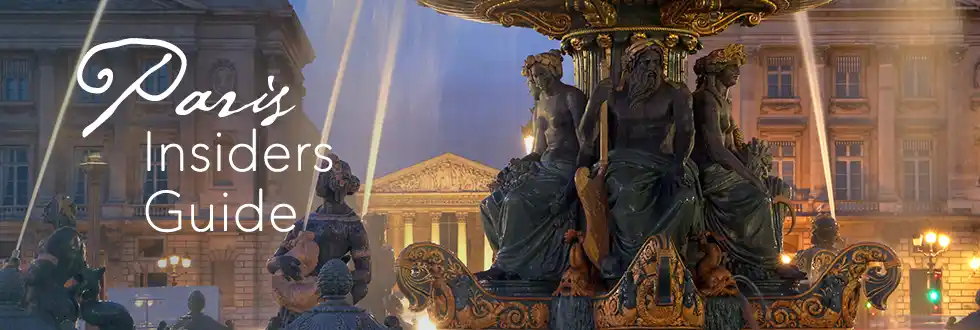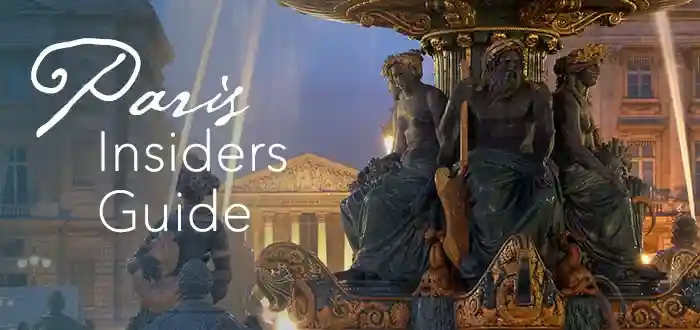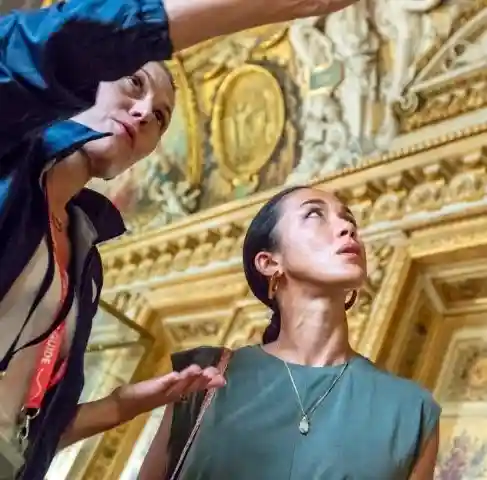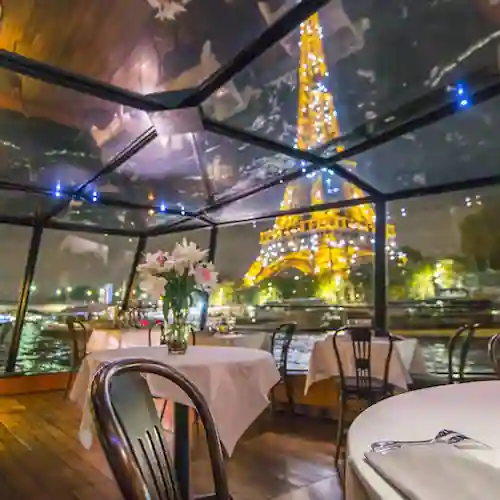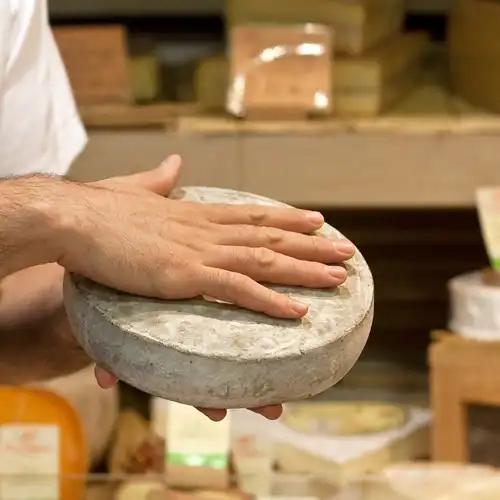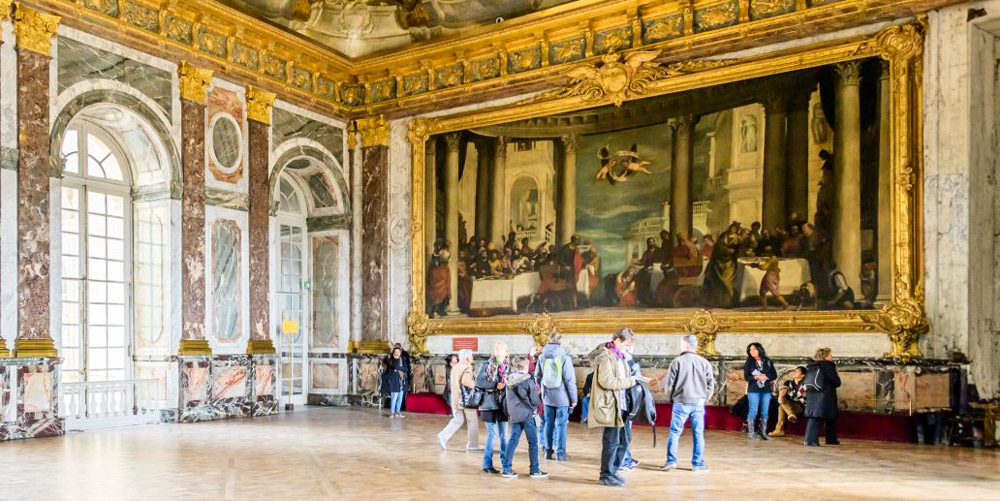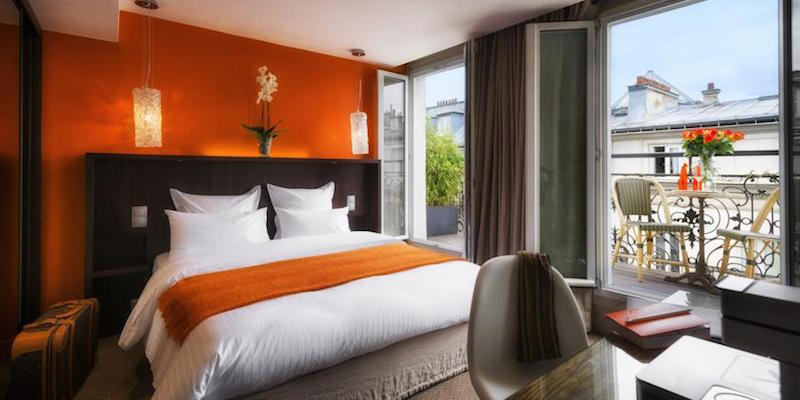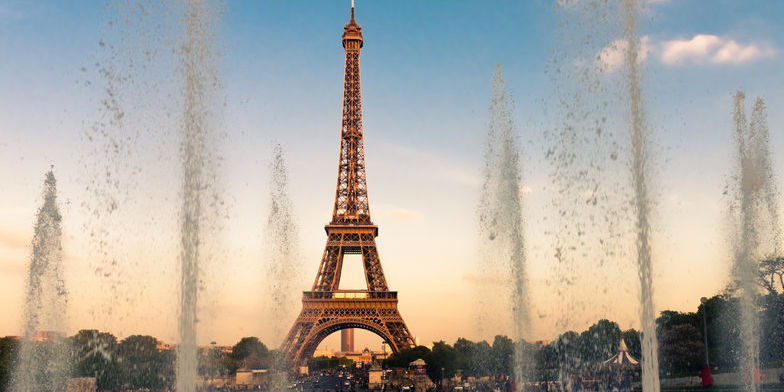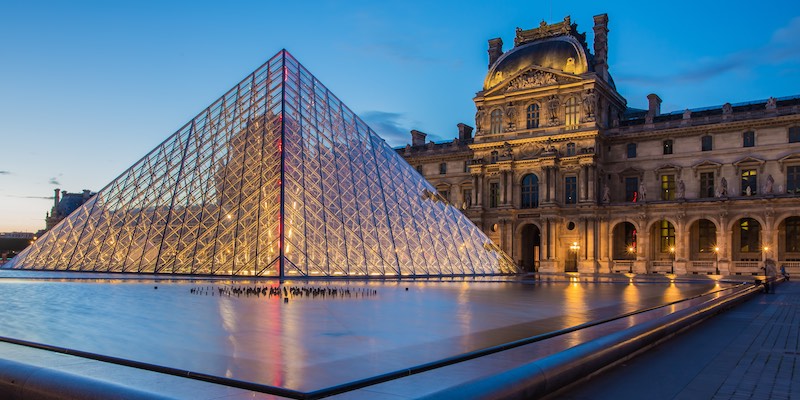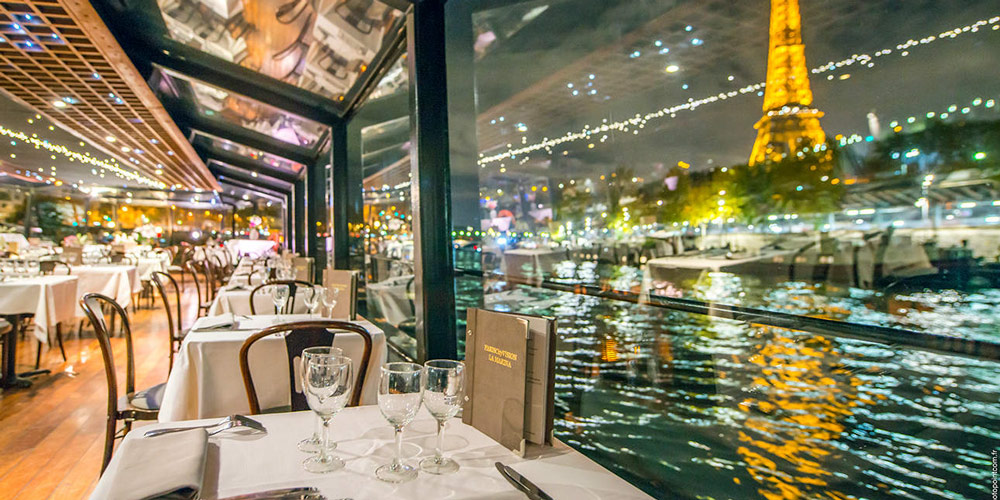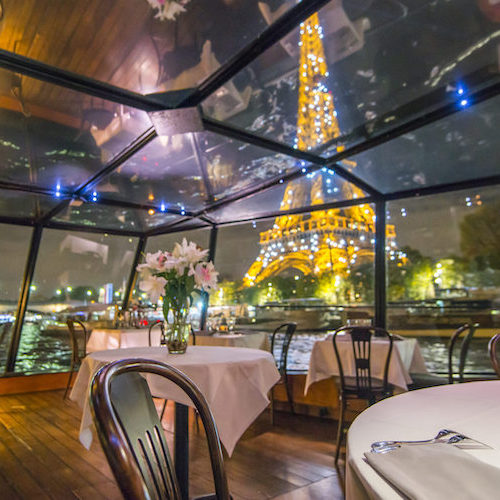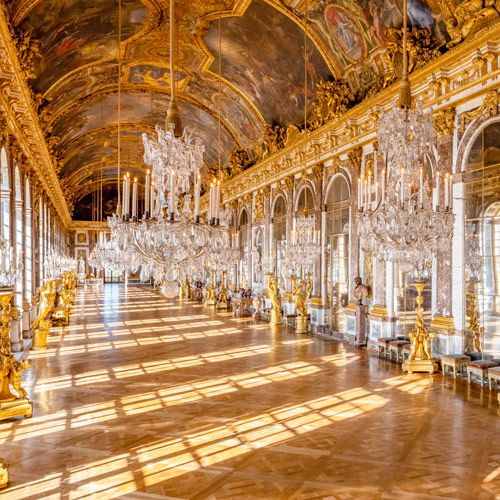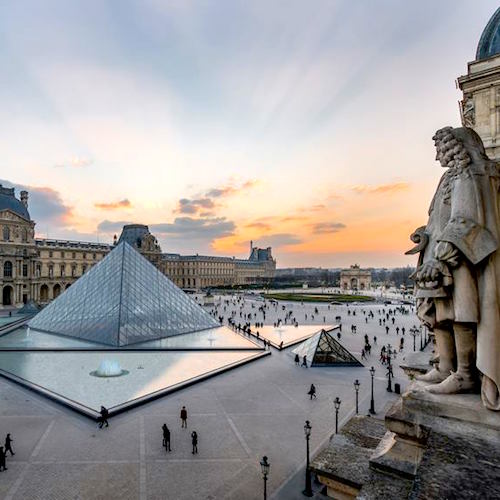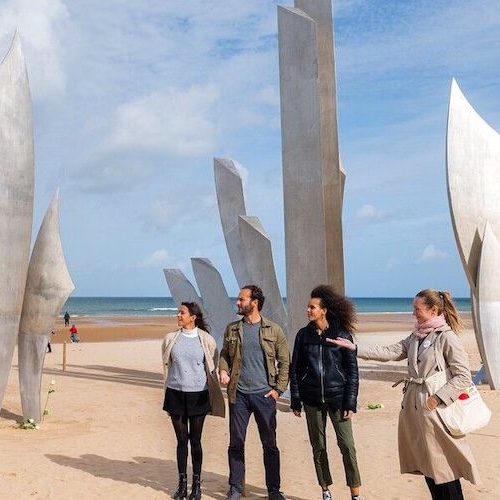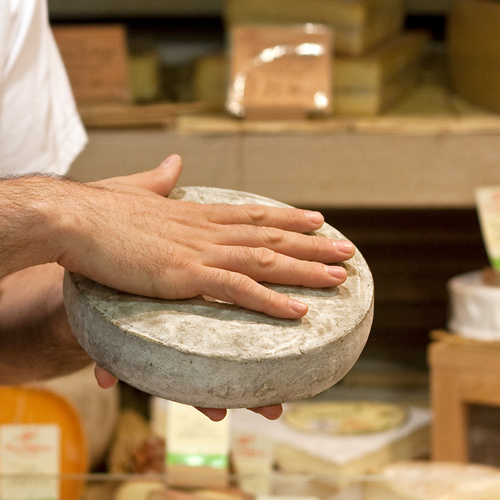The Grand Mosque Of Paris – Serenity In The City
In the Latin Quarter, just behind the Jardin des Plantes, sits one of Paris' most transporting landmarks. The Grand Mosque of Paris blends North African elegance with French history in a quiet corner of the 5th Arrondissement. Once inside its walls, the city fades away into gardens, mosaics, and the scent of mint tea.
Visiting the Grand Mosque of Paris is not just about admiring its arches or sipping sweet tea — though you'll absolutely want to do both. It's also a deep dive into a chapter of France few visitors know well: a story of war, gratitude, resistance, and community.
![]()
Discover What's On When You're Here...
• January... |
• February... |
• March... |
• April... |
• May... |
• June... |
• July... |
• August... |
• September... |
• October... |
• November... |
• December... |
Discover What's On When You're Here
• January...
|
• February... |
• March... |
|---|---|---|
• April... |
• May... |
• June... |
• July... |
• August... |
• September... |
• October... |
• November... |
• December... |
A Monument of Gratitude and History
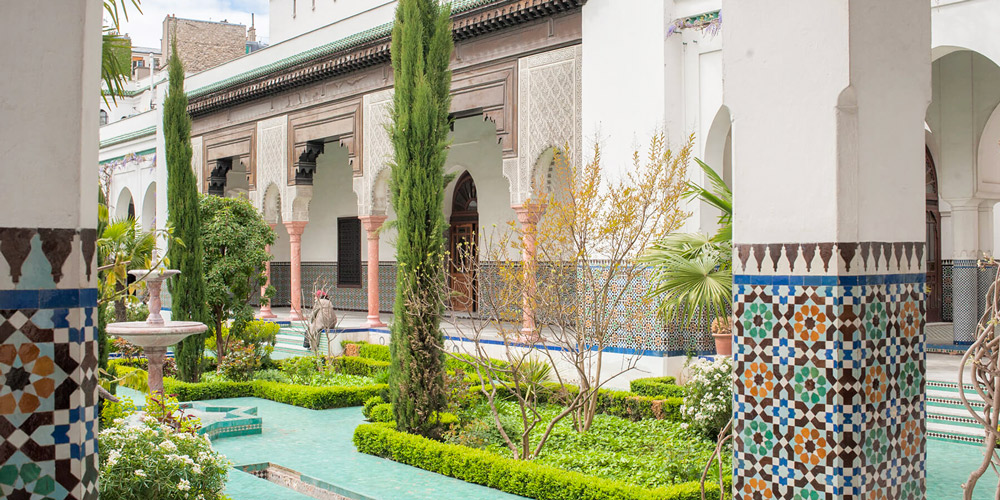 The serenity of the gardens of the Grand Mosque, photo Islamicity
The serenity of the gardens of the Grand Mosque, photo Islamicity
The Grande Mosquée de Paris wasn't simply built to be beautiful. It was a postwar promise kept. After more than 100,000 Muslim soldiers from French colonies died fighting in World War I, the French government greenlit the construction of a mosque as a tribute. Work began in 1922 and was completed in 1926.
It was a symbolic gesture wrapped in tile and stucco, a recognition of sacrifice and loyalty. The mosque was inaugurated by the President of France and Morocco's Sultan Moulay Youssef — an early nod to its role as both a religious site and diplomatic stage.
Since then, the mosque has served as a spiritual anchor for the city's Muslim community and a quiet ambassador for cultural understanding. In a city with countless cathedrals, this mosque offered a new kind of sacred space — one shaped by arches, gardens, and centuries of North African tradition.
The project was also deeply political. Building a grand mosque in the heart of Paris allowed France to project an image of tolerance and reciprocity toward its Muslim colonial subjects. While critics then and now have pointed out the complicated legacy of colonialism, the mosque's construction still marked a real shift in visibility for Muslims in French public life.
![]()
Architectural Marvel: Moorish Splendor in Paris
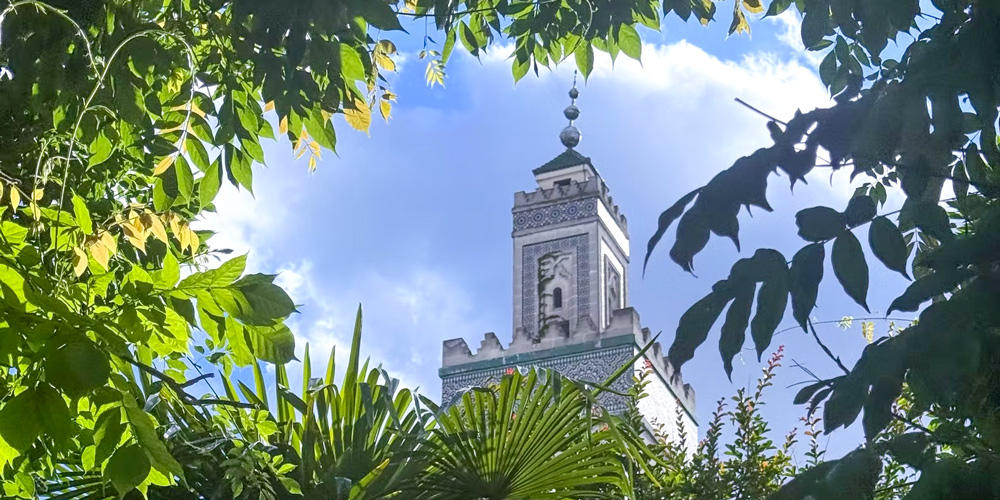 The minaret of the Grande Mosquée in Paris, photo Grande Mosquée de Paris
The minaret of the Grande Mosquée in Paris, photo Grande Mosquée de Paris
If you've ever strolled through Granada's Alhambra or wandered a Tunisian medina, the design of the Grand Mosque of Paris might feel familiar. Inspired by Moorish and Hispano-Moresque architecture, the mosque is a graceful mash-up of keyhole arches, zellige tilework, and a 33-meter minaret that catches the Paris light.
The minaret itself was modeled after the Zitouna Mosque in Tunis. It towers above the neighborhood with quiet dignity, just one part of a building that rewards closer looks. Mosaics shimmer in sun and shade. Woodwork frames courtyards with carved precision. And the entrance itself, marked with stars and crescents, seems to whisper, "Welcome".
Much of the work was done by North African artisans brought to Paris specifically for the project. Their handiwork, still standing a century later, turns the mosque into a living gallery of Islamic design. No filters required.
Don't miss the prayer hall — an elegant, domed chamber that remains off-limits to non-Muslim visitors during prayer times, but often visible from the doorway. It features fine carpets, chandeliers, and calligraphy in fluid Arabic script. Even a quick glimpse reveals the artistic devotion poured into this sacred space.
![]()
|
Trade Paris bustle for royal grandeur on a guided Versailles tour. Skip the lines, wander the gardens, and peek inside Marie Antoinette’s private estate. History never looked this good. |
|
Trade Paris bustle for royal grandeur on a guided Versailles tour. Skip the lines, wander the gardens, and peek inside Marie Antoinette’s private estate. History never looked this good. |
Gardens and Courtyards: An Urban Oasis
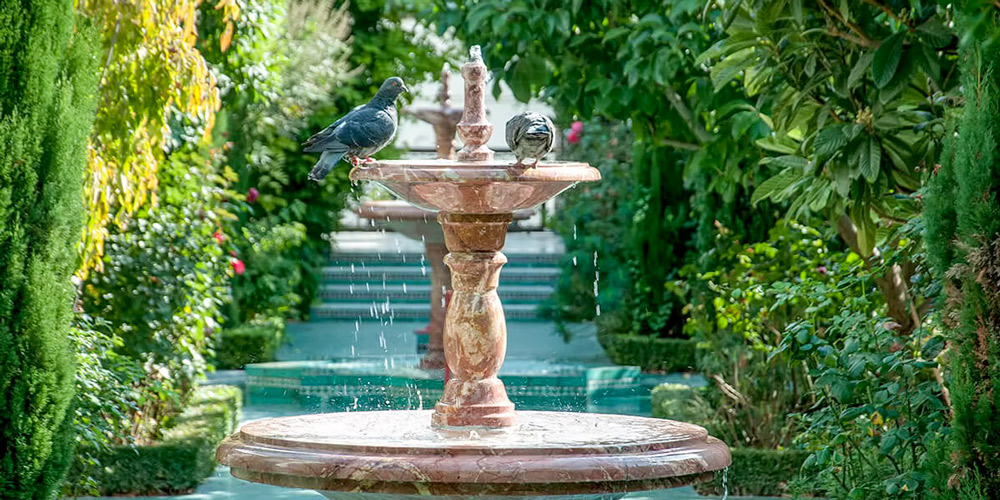 Fountain in the tranquil garden, photo Grande Mosquée by Omar Boulkroum
Fountain in the tranquil garden, photo Grande Mosquée by Omar Boulkroum
It's not just the architecture that calms the spirit — it's also the setting. Step into the mosque's central courtyard and you're suddenly in another climate zone: palm trees sway, birds chirp, fountains gurgle, and Muslim Parisians slow down.
This lush garden space is covered in marble pathways and framed by turquoise-tiled walls. A series of small fountains cool the air, and benches beckon for a few minutes (or hours) of stillness. In spring, flowering shrubs create bursts of color amid the geometry of tile.
The garden isn't restricted to quiet contemplation, though it certainly excels at that. It's also a favorite backdrop for wedding photos, amateur sketch artists, and anyone looking for a pretty spot to digest a tagine.
There's something restorative about the mosque's blend of architecture and nature. In a city defined by motion and noise, the courtyards invite you to do nothing. It may be one of the most underrated luxuries in Paris.
![]()
|
Browse our hand-picked Paris hotel deals with real-time discounts of up to 20%. Stay in the Marais, Saint Germain, the Latin Quarter, the Left Bank near the Eiffel Tower… every arrondissement is on the list. |
|
Browse our hand-picked Paris hotel deals with real-time discounts of up to 20%. Stay in the Marais, Saint Germain, the Latin Quarter, the Left Bank near the Eiffel Tower… every arrondissement is on the list. |
Stories of Courage: The Mosque During World War II
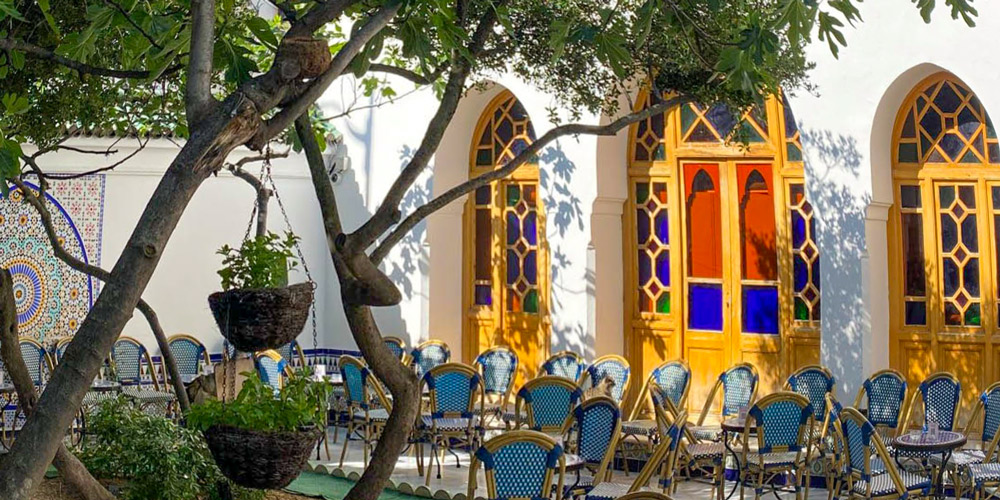 Another peaceful corner of the Grand Mosque of Paris, photo Grande Mosquée
Another peaceful corner of the Grand Mosque of Paris, photo Grande Mosquée
One of the most remarkable chapters in the mosque's history came during World War II, when Rector Si Kaddour Benghabrit quietly turned the building into a sanctuary for Jewish refugees and resistance fighters.
Using the mosque's labyrinthine cellars and ancient tunnels, Benghabrit sheltered those fleeing Nazi persecution. He arranged for false identity papers, disguised refugees as mosque workers, and even had names carved onto the Muslim cemetery to provide convincing cover stories.
Historians believe hundreds of lives were saved through these efforts. While not as widely known as other wartime acts of resistance, the mosque's quiet heroism continues to inspire. Today, its history of compassion is remembered with pride by those who know the story.
Though records were often kept intentionally vague to protect those involved, a growing body of literature and documentary work is helping bring this history to wider audiences. In recent years, several French-Jewish families have come forward to confirm the stories they once whispered.
![]()
|
Skip the famously long lines and head straight to the top of the Eiffel Tower. With a guide to lead the way, you'll be taking in the panoramic views while everyone else is still waiting below. |
|
Skip the famously long lines and head straight to the top of the Eiffel Tower. With a guide to lead the way, you'll be taking in the panoramic views while everyone else is still waiting below. |
Tea Room, Restaurant, and Hammam
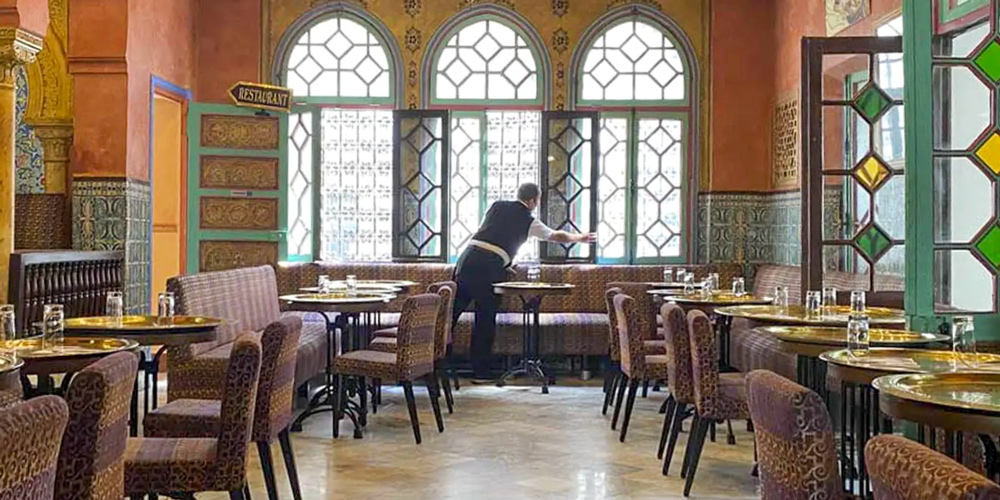 The tearoom at the Grand Mosque of Paris, photo Grande Mosquée
The tearoom at the Grand Mosque of Paris, photo Grande Mosquée
You don't have to be a history buff to enjoy the mosque. Some visitors come just for the Grand Mosque of Paris tea room, where mint tea is poured in long streams into delicate glasses and paired with flaky pastries under painted woodwork and leafy trees.
Next door, the Grand Mosque of Paris restaurant serves North African classics: think lamb tagines, couscous royal, and generous bowls of harira. It's popular with locals, especially on weekends, when tables fill up fast and the smell of spices wafts out onto the sidewalk.
And then there's the Grand Mosque of Paris hammam, a traditional steam bath that offers scrubs, massages, and hours of well-earned relaxation. Open to both women and men (on different days), the hammam is one of the few in Paris and one of the best in Paris. It's a calming continuation of the mosque's spirit of wellness and hospitality.
You can book a treatment or just come for the ambiance: soft lighting, tiled walls, and thick steam that makes the outside world disappear. It's not uncommon to see regulars show up weekly for their ritual unwind.
![]()
|
Skip the long lines and dive into the Louvre’s greatest hits — the Mona Lisa, Venus de Milo, and more — on a guided tour that shows you the treasures without the museum overload. |
|
Skip the long lines and dive into the Louvre’s greatest hits — the Mona Lisa, Venus de Milo, and more — on a guided tour that shows you the treasures without the museum overload. |
Art, Learning, and Community
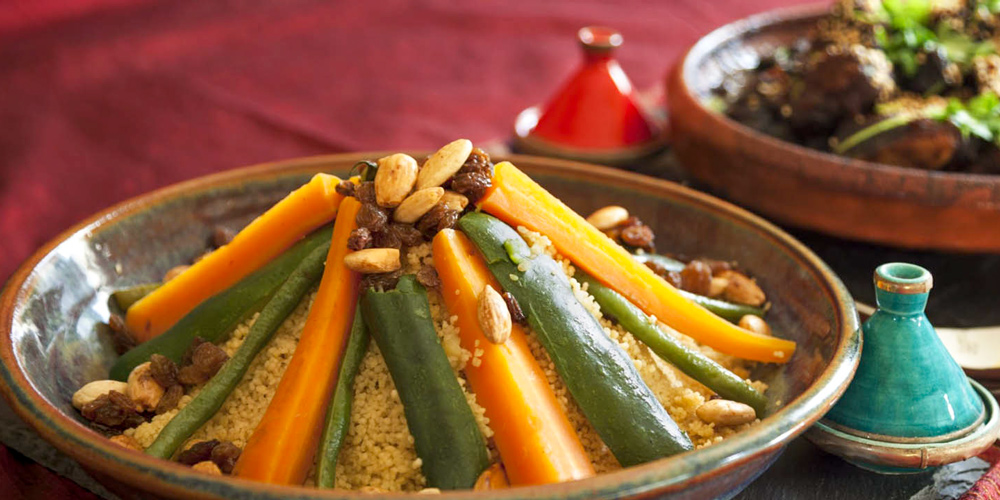 Classic North African cooking at the restaurant, photo Grande Mosquée
Classic North African cooking at the restaurant, photo Grande Mosquée
Beyond tea and tilework, the mosque houses a cultural center dedicated to Islamic learning and the arts. A library and small exhibition hall offer rotating displays on calligraphy, Islamic architecture, and other facets of North African heritage.
These exhibitions aren't massive blockbusters, but they offer thoughtful insight into traditions often overlooked in Western Europe. They're also a good excuse to linger longer and absorb the mosque's quieter intellectual life.
The mosque also plays an active role in community outreach, offering language classes, organizing events, and engaging in interfaith dialogue. In a city that often debates its multicultural identity, the mosque reminds us that shared understanding starts with a cup of tea and a conversation.
Many local schools arrange field trips here, and the mosque frequently partners with educational institutions and city programs to foster interfaith and intercultural exchange. It's an ongoing story of welcome and conversation, one cup of tea at a time.
Tips for Visiting the Grand Mosque of Paris
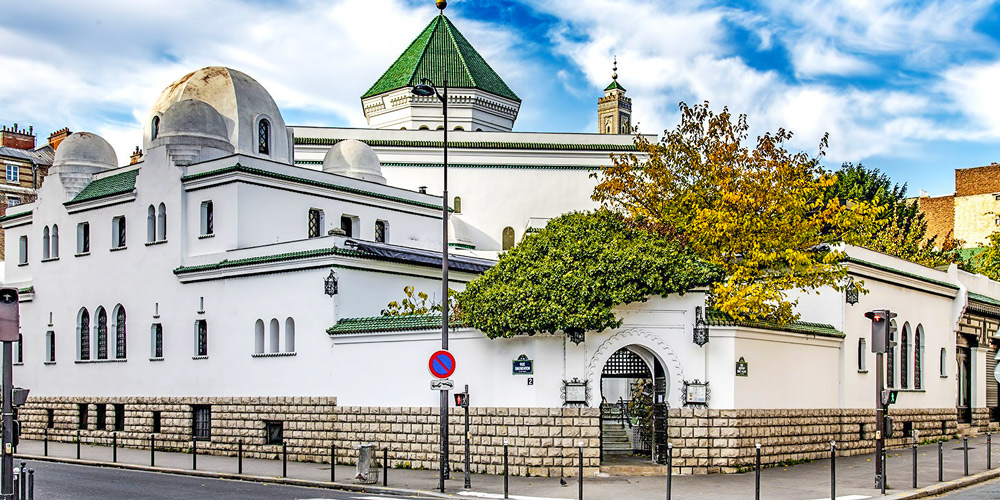 Exterior of the Grand Mosque, photo Grande Mosquée de Paris
Exterior of the Grand Mosque, photo Grande Mosquée de Paris
Dress modestly. That's the first and most important bit of advice for anyone planning a visit. The Paris mosque dress code doesn't require anything dramatic — shoulders and knees covered, and a scarf for women — but it's enforced respectfully. Cover-ups are available at the entrance if needed.
Guided visits are available, but many visitors are content to stroll through the gardens and interiors independently. Aim to arrive mid-morning or later in the afternoon to avoid crowds, and plan time to linger over tea.
Visiting the Grand Mosque of Paris pairs beautifully with other nearby spots: the Jardin des Plantes is across the street, and the lively Rue Mouffetard isn't far. It's easy to make a day of it — and a lovely one at that.
![]()
|
From Paris to Provence, Burgundy to Bordeaux, find hotel deals with current sale prices. Save up to 20% in cities, villages, beach towns, and storybook countryside escapes. |
|
Discover today's sale prices on hotel rooms in every village & city in France. Save up to 20%. Find hotels in Paris, Burgundy, Provence, the Loire Valley, Normandy, and everywhere else! |
An Unexpected Chapter in Paris
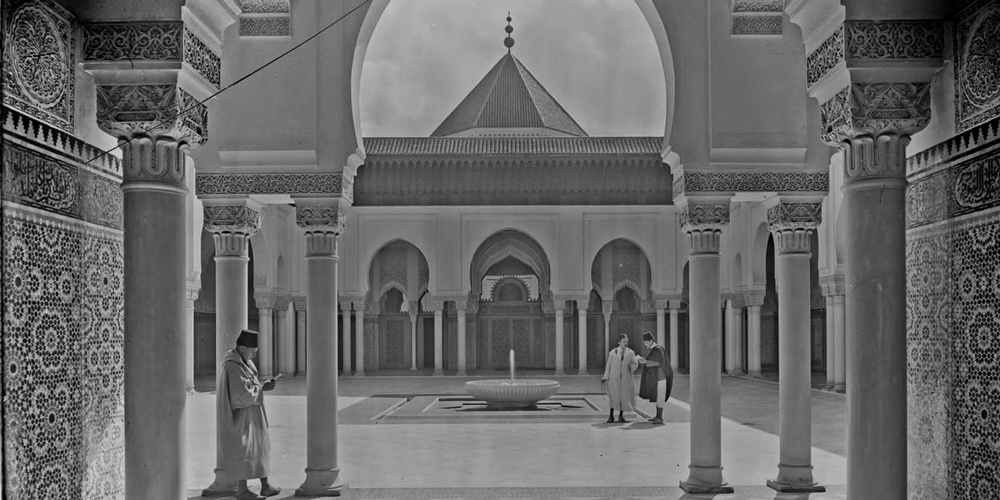 A vintage photo of the Grand Mosque of Paris, photo Grande Mosquée
A vintage photo of the Grand Mosque of Paris, photo Grande Mosquée
The Grande Mosquée de Paris rarely tops any first-time visitor's list, but it probably should. It's a rare Paris destination that blends quiet beauty, living history, and truly good food without the crowds or ticket queues.
It's also a place where past and present overlap: a monument built from gratitude that continues to welcome, shelter, and share. Paris has plenty of gilded grandeur. But here, in the 5th Arrondissement, you get something else: serenity, generosity, and a slow sip of something sweet.
For return visitors to Paris who think they've seen it all, the mosque offers something new: a place where French and Islamic cultures meet not in tension, but in daily harmony. Even if your French isn't perfect, the language of hospitality is fluently spoken here.
The Grand Mosque of Paris – Resources
The Grand Mosque Itself
- 2bis Place du Puits de l'Ermite
- 5th Arrondissement
- Website (in French)…
- Preparing a Visit…
The Grand Mosque Complex
- 39 Rue Geoffroy-Saint-Hilaire
- 5th Arrondissement
- Information…
- Restaurant…
- Hammam…
![]()
|
Paris Dinner Cruises on the Seine Dine in style as you glide past the Eiffel Tower, Notre-Dame, and the Louvre on a magical Seine River cruise. Gourmet food, champagne, and Paris lit up at night – it’s unforgettable. |
|
Paris Dinner Cruises on the Seine Dine in style as you glide past the Eiffel Tower, Notre-Dame, and the Louvre on a magical Seine River cruise. Gourmet food, champagne, and Paris lit up at night – it’s unforgettable. |
